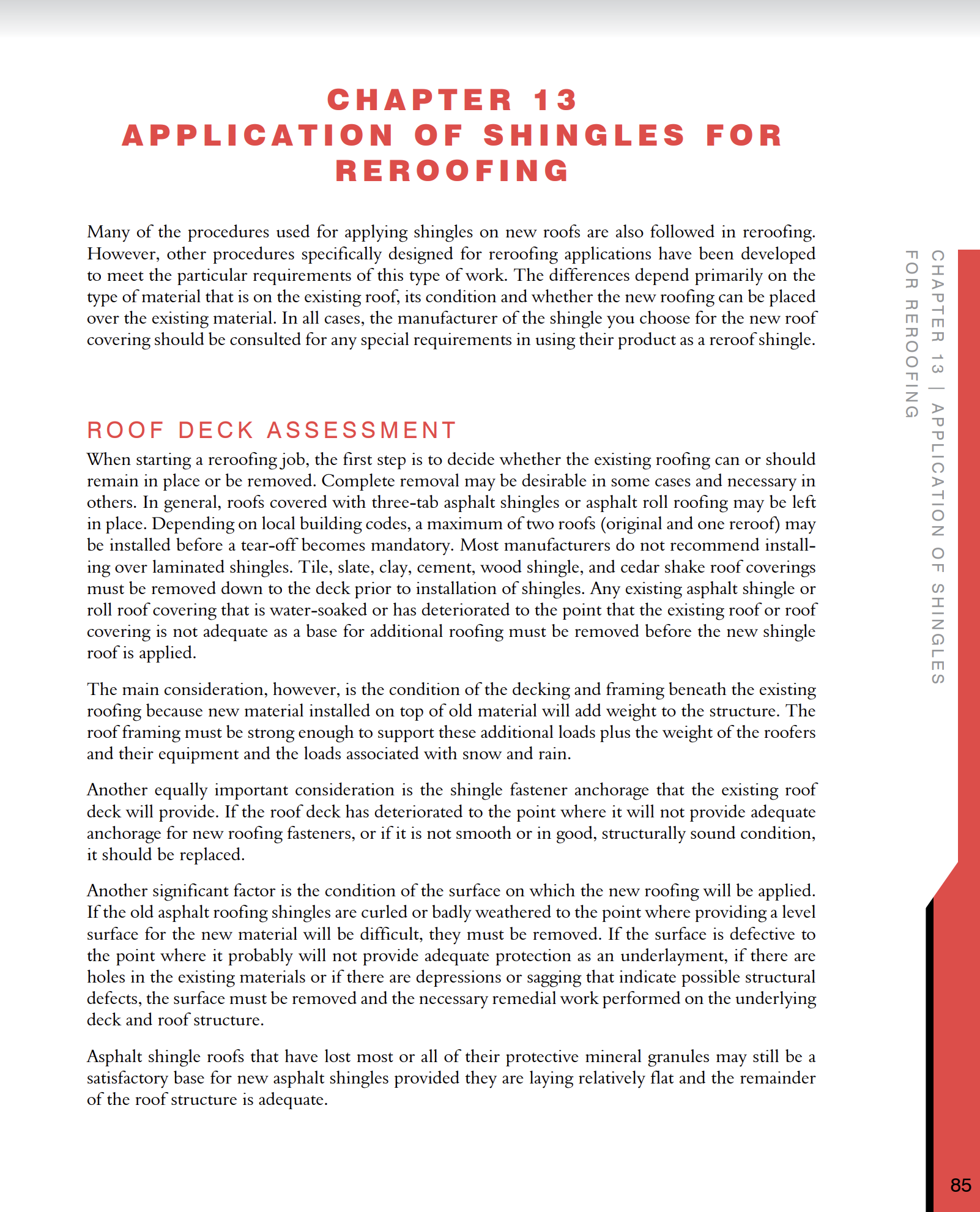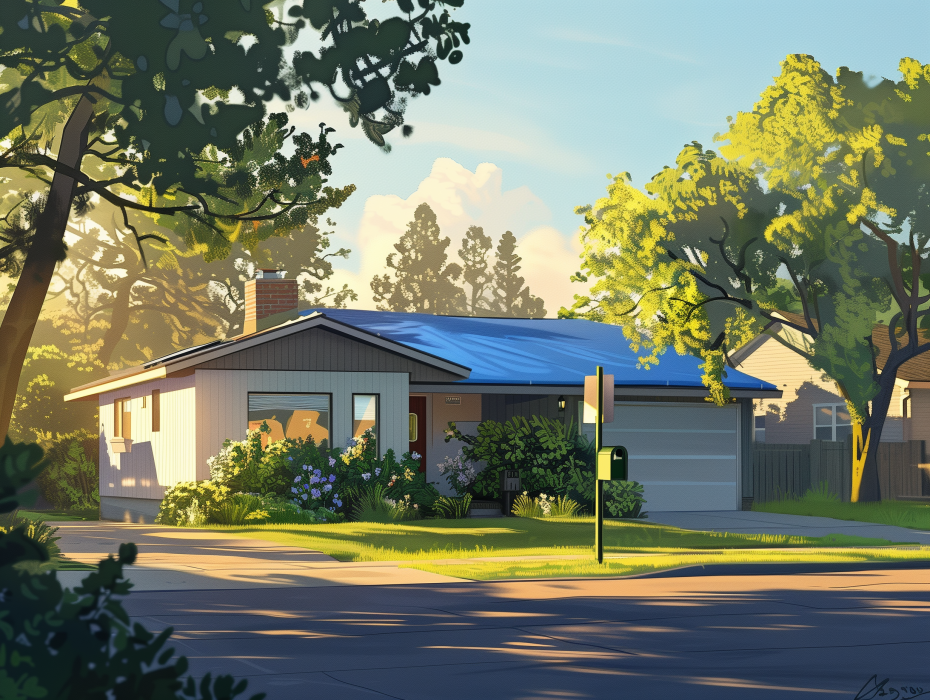Welcome to our comprehensive guide on the application of shingles for reroofing, as outlined in Chapter 13 of the Residential Asphalt Roofing Manual (A.R.M.A.). Reroofing presents unique challenges and considerations that differ from new roof installations. In this blog, we delve into the crucial aspects of assessing the roof deck, determining whether existing roofing should be removed, and preparing the surface for shingle application.
CHAPTER 13: APPLICATION OF SHINGLES FOR REROOFING
- Roof Deck Assessment:
- Determine whether existing roofing should remain or be removed
- Complete removal may be necessary based on condition and type of existing roofing
- Three-tab asphalt shingles or asphalt roll roofing can generally be left in place
- Maximum of two roofs may be installed before mandatory tear-off, depending on local codes
- Laminated shingles usually not recommended for installation over
- Certain roof coverings like tile, slate, clay, cement, wood shingle, and cedar shake must be removed before shingle installation
- Water-soaked or deteriorated existing roofing must be removed before applying new shingles
- Consider condition of decking and framing beneath existing roofing
- Ensure roof framing is strong enough to support additional weight
- Check shingle fastener anchorage on existing roof deck
- Replace deteriorated roof deck if necessary
- Assess condition of surface for new roofing application
- Remove curled, weathered, or defective existing roofing materials if needed
- Repair any defects in adjacent building parts before reroofing
- Replace rotting or deteriorated wood trim
- Refill chimney mortar joints and replace worn flashings if necessary
- Clean, rebuild, replace, or reline gutters
- Ensure adequate, code-compliant under-roof ventilation
- Clean debris from roof surface after repairing deficient areas
- Apply shingles following procedures for new construction, including underlayments, drip edges, and flashings where necessary
- Surface Preparation:
- Inspect adjacent areas for defects and repair as necessary.
- Ensure proper ventilation to avoid condensation issues.
- Clean debris from the roof surface before proceeding.
- Old Roofing Removal:
- Strip materials down to the roof deck, protecting the structure and surroundings.
- Use flat-surfaced shovels for removal and ensure all old fasteners are removed.
- Consider self-adhering shingle underlayment and ventilation requirements.
- Old Roofing Remains in Place:
- Address loose, curled, or damaged shingles before installing new ones.
- Follow specific procedures for asphalt shingles over existing materials.
- Underlayment:
- Apply new asphalt felt underlayment if old roofing has been removed.
- No additional underlayment is generally required if roofing is applied directly over existing material.
- Ice Dam Protection:
- Install new ice dam protection if required, extending beyond the interior wall line.
- Follow manufacturer instructions for proper application.
- Starter and Succeeding Courses (Reroofing):
- Differentiate between “Nesting” and “Bridging” methods based on existing shingle type.
- Ensure proper alignment and fastening for smooth installation.
- Flashing:
- Follow flashing details for new construction or reuse existing flashings if serviceable.
- Pay attention to valley, sidewall, soil stack, vent pipe, and chimney flashings.
- Hips and Ridges:
- Apply hip and ridge shingles in the same manner as new construction, ensuring level application.
Recycling Note:
- Consider recycling options for old asphalt shingles to promote sustainable practices and reduce landfill waste.
For detailed installation instructions and specific manufacturer recommendations, consult the Residential Asphalt Roofing Manual.
For immediate service or consultation, you may contact us at Allied Emergency Services, INC.
Contact Information:
- Phone: 1-800-792-0212
- Email: Info@AlliedEmergencyServices.com
- Location: Serving Illinois, Wisconsin, and Indiana with a focus on the greater Chicago area.
If you require immediate assistance or have specific questions, our human support is readily available to help you.
Disclaimer: This article is intended for informational purposes only. For professional advice, consult experts in the field.










